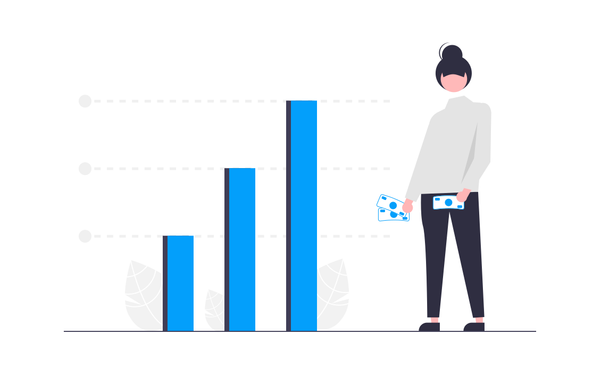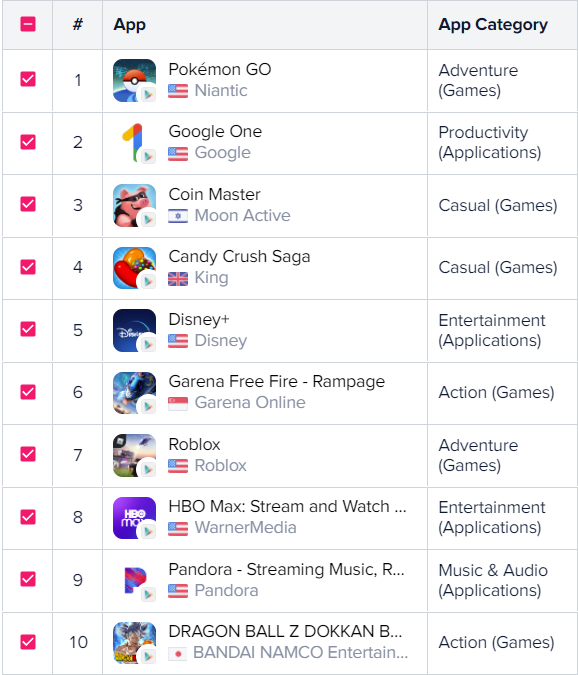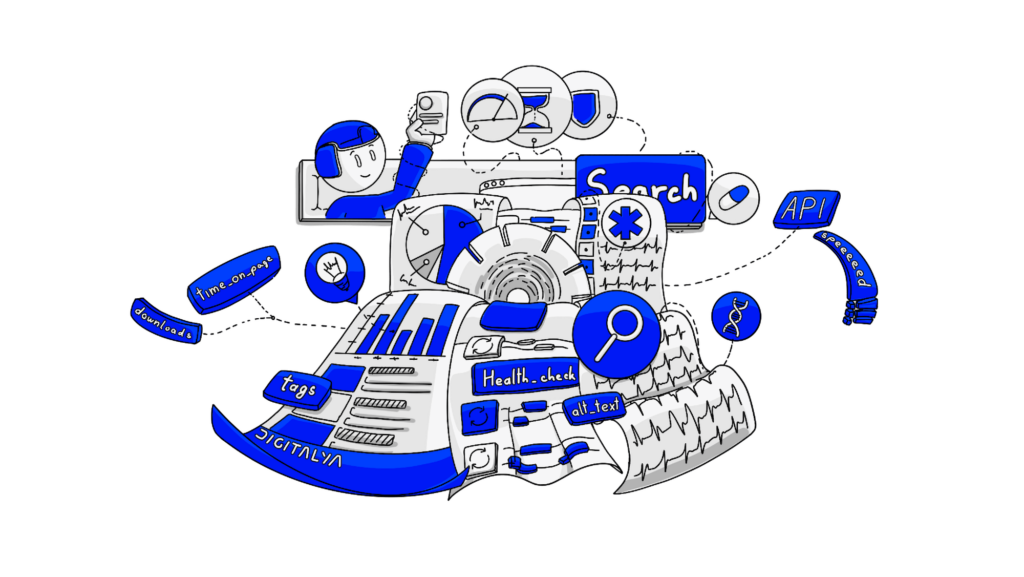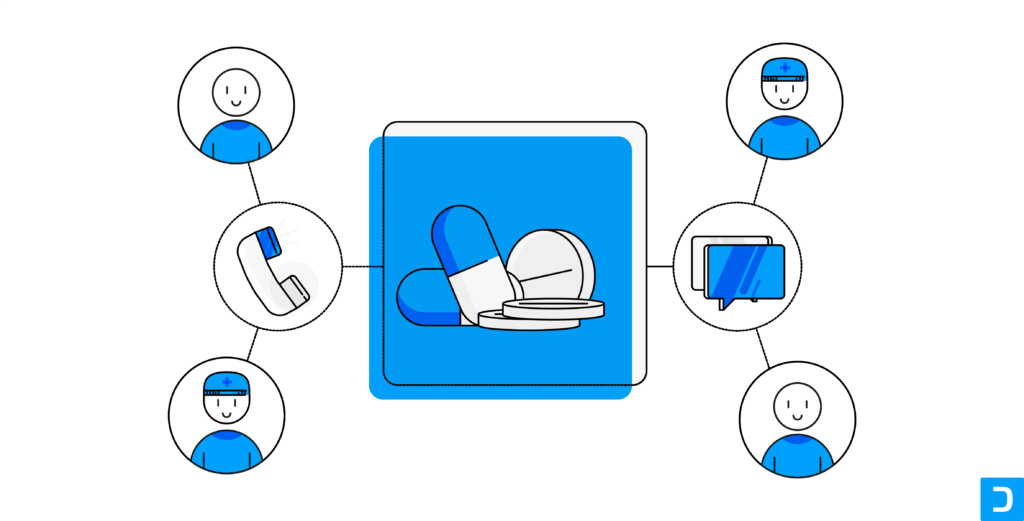You’ve probably asked yourself before: how do free apps make money? What app monetization model works best for your app idea? Well, wonder no further; we’re here to answer your questions in this blog post.
If you take a look in any app store, you’ll notice something interesting: 90% of the apps available are free. So how do you monetize an app that is free?
1. What is a free app?
Just like the name suggests, this is a type of app that can be downloaded for free, as opposed to a paid app, which charges users a sum of money for downloading them.
In order words, nothing is stopping a user from getting a free app (unless it has to be downloaded from shady websites). So it can be downloaded on a whim, used once, and never opened again. Therefore, the trick with this type of app is not necessarily user acquisition but user retention.
2. How do free apps make money?
Just because an app is free does not mean it doesn’t have revenue streams. If we look at the market, we’ll notice that more than 95% of apps in Google Play or 90% in the Apple App Store are free. However, they generate about $71.3 billion in revenue. So how do the free apps make money?
There are many app monetization strategies that you can use to learn how to make money from an app idea.

1. Advertising
Displayed ads are probably the first method that comes to mind when you think about app revenues. Studies have shown that 7 out of 10 free apps display ads that produce some kind of revenue. However, not all ads are the same:
- Banners ads
These kinds of ads are usually placed at the top or bottom of the screen and are considered the less intrusive. The app experience isn’t affected; however, banners generally have low click-through rates and depend on brand recognition.
- Video ad
Usually, between 10 and 30 seconds, they play automatically when there would be natural pauses in the user experience. Another category of video ads is reward ads, primarily used in gaming apps. Users watch a video ad and gain some kind of perk or points useful for their mobile gaming experience.
- Native ads
As the name suggests, these ads are supposed to be integrated naturally into the app. However, because of that, some users find native ads intrusive. Nevertheless, they are a popular revenue generation strategy for app providers.
- Interstitial ads
There are full-screen ads that appear when you use an app, usually when you open or close the mobile app. The user has two choices to close the ad, either close it or tap on the promoted content.
- Incentivized ad
This type of advertisement provides users with a reward for completing specific tasks within the app, like filling out a poll or sharing content. These rewards usually increase user engagement and app loyalty in the long run.
Is advertising the best monetizing strategy?
Even though this model is one of the most popular, it’s doesn’t mean it’s the best one. Lately, intrusive ads have started to irritate users, therefore damaging user experience. In addition, less than 20% of apps users click on the ads; consequently, this strategy is only effective if your app has many users.
2. Affiliate marketing
Referral marketing is another variation of advertising monetizing strategies. This is placing informational content related to a certain product or service in your app for your users to see. Based on how many user clicks your link gets, for example, you earn money based on the cost-per-action revenue share.
With this monetization method, you can promote three main things: another application, inapp ads, or other products or services. There are also some affiliate networks that can help you find suitable affiliate partnerships for your app.
There are a few different payment methods that you should know about for referral marketing:
- CPM – cost-per-impression, where you earn money based on the number of impressions
- CPC – cost-per-click, where you are paid according to how many users click on the ad
- CPV – cost-per-view, you gain revenue based on video views or interactions
- CPI – cost-per-install, where you gain affiliate income based on how many users install an app through your ad
3. In-app purchases and the freemium model
This is a great way to monetize your apps without displaying ads. The freemium model makes it possible to sell digital or physical products, premium features, or new app content. All of these transactions will be managed by your app store and the app owner gets a commission for every purchase.
There are three main categories in an inapp purchases monetization strategy:
- Consumables – items that can be used only once, like points or digital currencies, mostly used in mobile games
- Non-consumables – permanent features, like ad-blocking
- Subscriptions – allows the user to unlock new features or content for a period of time
4. Subscription models
The subscription model will set up revenue streams based on how often the app owner wants it to be renewed – it could be weekly, monthly, or anually. This type of monetization strategy is mostly used by cloud storage applications, audio or video streaming apps, or digital news portals. App users gain access to new content or features based on their type of subscription.
5. Sponsorship models
This strategy works for apps that already have a large audience in a specific target niche. The app owner contacts businesses in the same niche to match their brand with ads, the design or the app or the content displayed.
6. App Merchendise and E-commerce businesses
Nowadays, most physical purchases have been replaced by online ones, especially through mobile apps. You can create and sell merchandise for your app and allow your users to purchase branded items. You can have your logistics managed by a platform like Amazon to avoid extra costs.
3. How to choose the right monetization strategy
Not all monetization strategies are suitable for every app. Here’s a few things that you should take into consideration before choosing your monetization models.
- Don’t forget your app type
Be sure that you fully understand the type of your mobile app. What does it do? What problem does it solve and how?
After you have a clear idea about all of that, you can cut down on the possible monetization strategies that can be used by your app. For instance, if you have a service app, or you offer content to your users, than you could consider a subscription model. However, for an ecommerce app, this revenue model won’t work.
- Keep an eye out for your competitors
By studying your competitors you can find out what monetization business model is suitable for your app. Chances are that if it worked for them, it will work for you too. Additionally, you might find a loophole that you can use as an advantage.
- Get to know your target audience
Who are your users? What do they need? How much would they be willing to pay? Those are only a few questions about your users that you should know the answer to. Try to provide real value to your target audience; this way, you’re sure to gain more revenue from your free app.
4. Is making an app worth it?
Mobile applications, if done right, can be totally worth it. However, you need to invest a lot of time and money in order to succeed. There’s a lot of factors that can influence whether or not it’s worth to build an app. And they all depend on what you do with your app idea.
- Marketing strategy
Obviously, you can’t make a profit from an app that has no downloads. This means that you need to know who your targeted audience is and build a marketing plan accordingly. Study your competition and emphasize how your app is better.
- Business model
You need to decide what monetization strategy you want to follow, if you want your app to be free or paid, and so forth. Business models are just one aspect of many considerations you’ll need to make, like support for the development and sale of your app idea, customer support, and so forth.
- App development
It’s essential to follow the best practices for UI/UX design, choose the right OS, and make all the right choices so that your target audience can easily find your app. Analyze whether you want to outsource the development of your app or you want to do it in-house.
5. Free app vs paid app
It’s no secret that we use mobile apps for pretty much anything. From communicating with our friends, to finding our way around a new place, there’s an app for everything. In 2018, there were around 4 million apps on Google Store and 2 million in the Apple App Store. Additionally, most of the top grossing apps are free.
On average, a regular user has around 4 to 9 apps that are used on a daily basis. On top of that, studies show that no more than 10% of app users are willing to pay for an app, and that is for an app of great quality, with specific features.
Most users are more likely to interact with an app through inapp purchases, rather than pay for them from the start. This happens because the app gets to prove it’s quality and worth in the free version. It’s important to allow users to make the decision on whether or not they want to pay to get more functionalities.
The main difference between free apps and paid apps
Free applications:
- Attract more users, have greater visibility, and more downloads
- Lower development costs since they are less complex than paid apps
- Multiple app monetization strategies possible
- Are great for brand image and brand loyalty for businesses
Paid applications:
- Have fewer downloads, because not many users are willing to pay for the actual app without a trial period
- Higher user expectations
- Higher development costs since paid apps are more complex
- Less monetization strategies applicable
6. How much do apps make from ads
On average, 25% of mobile developers with an ios app and 16% with an android app make around $5k per month with their free app. You can conclude that only 20% of the apps on the market are of high quality and produce substantial revenue, while 80% aren’t actually needed.
The most used app monetization strategy is the advertising model, along with the inapp purchases one. The actual amount of generated revenue depends on the app itself and its earning strategy. However, the answer to the how much money do free apps make from advertising question can have three generic answers:
- With a banner ad, the lowest income is $0.10
- An interstitial ad can generate revenue moderately, about $1 to $3
- Video ads are the most fruitful, with $5 to $10.
Most app advertising use the CPC revenue models where the optimal revenue per mile (RPM) is somewhere between 1.5% and 2%.
Ad Revenue = Impressions (or clicks) x RPM.
For a clear example, let’s assume that you have 50.000 banner ads displayed in a day. You have an average click rate of 750, so the revenue can be calculated as: $75 (750 x $0.10).
Average Number of Clicks = ad number x (RPM/100).
Taking a quick look at the Business of Apps statistics, we can see that the overall app revenue grows with every quarter, with the overall revenue for 2020 being a whopping $111 billion dollars.

7. How do free apps make money without ads
Even if it might seem like ads are the best revenue generators, you have other options available. For example, you can sell an additional feature to your users, either subscription based or as a one-time purchase.
For mobile games, you can earn money from microtransactions of $1 to $5. Users pay for rewards that make their gaming experience better. Multiply the price of the inapp purchases with the number of users and you can see where the app owners get their revenue.
Another example can be dating apps, like Tinder, where app developers create premium features that users pay to use. Some even offer seasonal packages with different bonuses, like stickers or icons.
Because of the answer to the how do free mobile games make money question, studies show that mobile games are the most successful category of apps when it comes to revenue generation.

These are the top grossing apps in the US as of July 2021. You can see that 6 out of 10 apps are mobile games. However, this does not mean that nongaming apps aren’t excellent revenue generators. According to SensorTower, in the first quarter of 2017 for USA, these were the top nongaming apps with the highest revenue:
- Netflix
- Pandora
- HBO Now
- Tinder
- Spotify
- YouTube
- Hulu
- Live.me
- Match
- Google Drive
What do these apps have in common? The app itself is free, but they use subscription revenue models or inapp purchases.
8. How do free social apps make money
Most of the people around you use at least one social media app on a daily basis. And since most of the apps are free with no indispensable features with a price on them, it’s natural that the how do free apps like facebook make money question arises.
There are so many ways in which a completely free app makes money. As a general rule, when you aren’t paying for an app, you are the payment. You sell your time and attention to the social media apps and they a cut to advertisers.
On top of that, some social media apps are collecting and selling your data to different companies. While this might sound unethical at first, this helps businesses personalize and customize their product to fit your needs. Also, most of the time, you can customize the amount and type of data you want to share with the social media app that you use.
9. How do I get 1000 app users
This is a question that mobile app developers asks themselves when they begin building their first app. Each popular app started from the bottom. So how did they get where they are now? And, even more, how did they get their first 1000 app users? Let’s analyze some strategies:
- Go where your users are, offline
Know your target audience well. Where do they usually hang out offline? For example, the Tinder founders used to run around college campuses pitching their idea app. Uber used to give referral codes to people waiting for public transportation. Find where your users are and approach them.
- Go where your users are, online
This one is a no brainer. Find where your target audience spends the most time online and be present there. Buffer acquired their first 100,000 users through guest posting. Netflix got their early users by promoting their idea in internet communities within their niche.
- Invite your friends
Most people overlook inviting their friends to use the app they make. However, they could be your initial users and they could promote your concept further. That’s how Lyft and Yelp got up from the ground. Facebook’s first users were a couple of Mark’s friends.
- Make it exclusive
A lot of people suffer from FOMO (Fear Of Missing Out) and you can use it as a way to get people to use your app. For instance, Instagram was first used by people that had a large Twitter following. This created a springboard effect on the day the app officially launched. Also, up until 2021, Pinterest was on an invite-only basis. This made the app exclusive and more and more people were curious about it.
There are only a few examples of strategies. A thing that all of them have in common is that they’re based on knowing their target audience well. Know you potential users’ behaviour, likes and dislikes, problems that need to be solved, and so forth. And they will use your app.
Do you get paid if someone downloaded your app?
Unfortunately, neither Google Play nor Apple App Store pay for an app download. On top of that, they take about 30% of all the app’s earnings. Therefore, in order to make profit with your app, you need to have a stable revenue stream.
10. How much does it cost to make an app?
Now, this question doesn’t have a straightforward answer. To build an app is not an easy adventure. Software development costs vary from region to region, they depend on the complexity of your app and what technologies you want to use.
Even though we’re talking about less complex apps, it’s still preferable to work with specialists, like a software development company. Working with a professional team is beneficial because you go through a well established product development process, you get support in all stages, from concept ideation to product launch.
It’s hard to give an exact estimation of how much your app will cost, but there’s three main app categories with approximate prices:
- Simple apps start from $24,000 and reach $60,000.
- Complex apps start from $36,000 and reach $85,000.
- Advanced apps start from $59,000 and reach $137,000.
To get a more accurate price, you can use an app cost calculator, like the one provided below.










